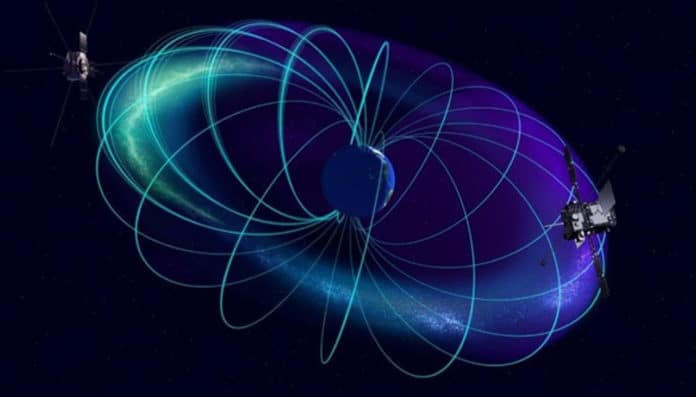Scientists have known that electrons in Van Allen radiation belts interact with ultralow frequency plasma waves to accelerate to reach the speed of light. Notwithstanding, it has not been clear when or where these killer electrons begin to accelerate.
To gain more insight into the electrons, a collaboration between researchers in Japan, the USA, and Russia analyzed data generated by the Arase satellite and Van Allen Probe. Both satellites gather data from the Van Allen radiation belts, zones of energetic particles originating mainly from the solar wind. Earth’s magnetic field traps energetic particles in the belts.
They found a hot spot in Earth’s radiation belt where killer electrons, which can cause severe anomalies in satellites, form.
On one side of the Earth, the Van Allen Probe identified characteristic signs of interaction between ultralow frequency waves and energetic electrons. On the opposite side, at the same point in time, the Arase satellite identified high-energy electron signatures, but no ultralow frequency waves.
The measurements demonstrate that the interaction region among electrons and waves is restricted, yet the killer electrons then continue to travel on an eastward way around the Earth’s magnetosphere.
Professor Yoshizumi Miyoshi of the Institute for Space-Earth Environmental Research at Nagoya University said, “An important topic in space weather science is understanding the dynamics of killer electrons in the Van Allen radiation belt. The results of this study will improve the modeling and lead to more accurate forecasting of killer electrons in Van Allen radiation belts.”
